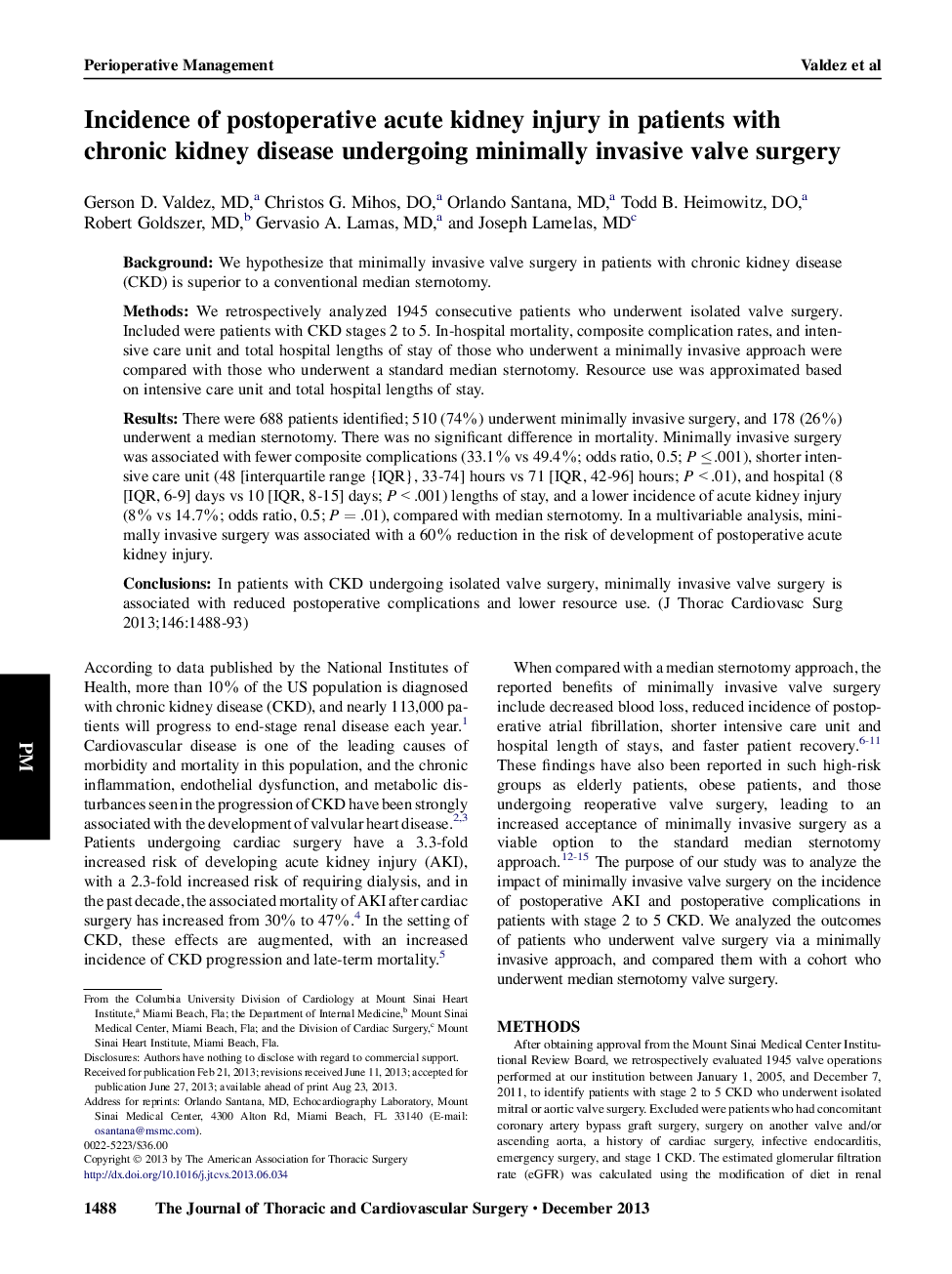| Article ID | Journal | Published Year | Pages | File Type |
|---|---|---|---|---|
| 2980859 | The Journal of Thoracic and Cardiovascular Surgery | 2013 | 6 Pages |
BackgroundWe hypothesize that minimally invasive valve surgery in patients with chronic kidney disease (CKD) is superior to a conventional median sternotomy.MethodsWe retrospectively analyzed 1945 consecutive patients who underwent isolated valve surgery. Included were patients with CKD stages 2 to 5. In-hospital mortality, composite complication rates, and intensive care unit and total hospital lengths of stay of those who underwent a minimally invasive approach were compared with those who underwent a standard median sternotomy. Resource use was approximated based on intensive care unit and total hospital lengths of stay.ResultsThere were 688 patients identified; 510 (74%) underwent minimally invasive surgery, and 178 (26%) underwent a median sternotomy. There was no significant difference in mortality. Minimally invasive surgery was associated with fewer composite complications (33.1% vs 49.4%; odds ratio, 0.5; P ≤ .001), shorter intensive care unit (48 [interquartile range {IQR}, 33-74] hours vs 71 [IQR, 42-96] hours; P < .01), and hospital (8 [IQR, 6-9] days vs 10 [IQR, 8-15] days; P < .001) lengths of stay, and a lower incidence of acute kidney injury (8% vs 14.7%; odds ratio, 0.5; P = .01), compared with median sternotomy. In a multivariable analysis, minimally invasive surgery was associated with a 60% reduction in the risk of development of postoperative acute kidney injury.ConclusionsIn patients with CKD undergoing isolated valve surgery, minimally invasive valve surgery is associated with reduced postoperative complications and lower resource use.
